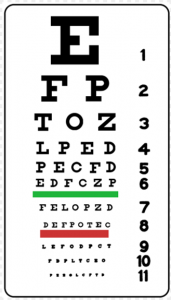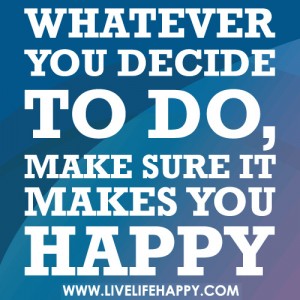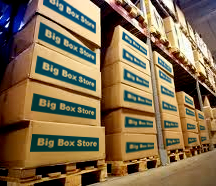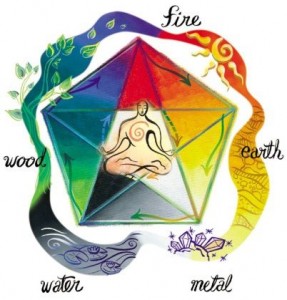 Professional organizers help you bridge your old lifestyle with your new lifestyle — working with you to change habits and forge successful ones. Sometimes you need just a gentle nudge to shift from the same old ways of doing things (or not doing them at all!) to new ways. This includes seeing through refreshed eyes — seeing your space, seeing yourself, and seeing the way you use your time.
Professional organizers help you bridge your old lifestyle with your new lifestyle — working with you to change habits and forge successful ones. Sometimes you need just a gentle nudge to shift from the same old ways of doing things (or not doing them at all!) to new ways. This includes seeing through refreshed eyes — seeing your space, seeing yourself, and seeing the way you use your time.
Do you feel mired? As if you can’t quite get any traction? Organizers help break the patterns and free you to start moving again. We help you handle papers differently, approach your closet from a new perspective , and work through your projects — to completion!
Professional organizers’ eyes are judgment free. We don’t look at spaces and draw down a curtain of shame; we look to help clients understand: how did things get piled on the floor? Or why are there duplicates taking up prime real estate in your home or office? Our goal is to teach new ways of handling your stuff to clear your spaces, work surfaces, and floors from clutter. And ultimately, this will help free your mind to be even more productive.
ORGANIZERS HELP CLIENTS CREATE:
• a new vision of themselves (you really can become an on-time person)
• a different script for their future life (you will finish this project)
• new habits to maintain order and calm (the pile on the kitchen counter isn’t a permanent fixture)
Break the hold old patterns have on your life by hiring an organizer. Organizers help you update your old operating system. We listen to what’s getting in your way and help you problem-solve HOW to do things — step by step — so you don’t get overwhelmed. We are cheerleaders for your successes no matter how incremental. We are confidants to your pitfalls as you learn to surmount them.
Clutter is more than a physical burden; it has an emotional claim. If you can admit that you are overwhelmed and you are open to receiving help, you have taken the first step to inviting an organizer into your life. Any space that overwhelms you probably has an organizer suited to improving the function of that area.
 As a lighthearted reminder that done is better than perfect, I sometimes intentionally reverse this adage with clients as we hang a shelf or assemble a bookcase. Unless you’re performing brain surgery or submitting a résumé, perfect isn’t always necessary.
As a lighthearted reminder that done is better than perfect, I sometimes intentionally reverse this adage with clients as we hang a shelf or assemble a bookcase. Unless you’re performing brain surgery or submitting a résumé, perfect isn’t always necessary.
An ounce of perfectionism as we strive for advancement in life can serve us well. It works in a corporate setting. You work hard; you get ahead. It’s the way the world works. However, we can cross a line, and real perfectionism can actually get in our way, exhaust us, and reduce our productivity.
I see perfectionism often in my work, and clients are relieved that someone recognizes their efforts and attention to detail. You may wonder why a perfectionist needs a Professional Organizer. The answer is simple. Perfectionism bogs you down in detail, and can make a task more laborious than it needs to be. It can also lead to procrastination.
See if you relate to any of the following statements:
– If I don’t have time to organize the whole closet today, I’ll wait until I do. There’s no sense doing a little at a time.
– I get anxious about starting a project because I don’t know how to do it the right way? Therefore, I’ll devote an inordinate amount of time to planning.
– Once started, my projects take longer than needed because I re-think them or re-work them constantly.
– I often miss deadlines because I am unable to submit a project and be satisfied with the end result.
– I don’t like asking for help and/or showing weakness.
To get moving, ask yourself these questions:
In closing, I offer you the following new mantras:
– Done is better than perfect.
– I did my best.
– My friends are coming to visit me, not my house.
– My boss is more likely to notice adherence to deadlines than be impressed by how much time I put into a project.
I won’t lie to you. Change involves stretching your comfort zone, but it comes with rich rewards.
If perfectionism still stands between you and organization, consider hiring a Professional Organizer. We’re trained to help you clear clutter and teach you systems to help maintain order.
P.S. I always measure twice, but that’s our secret.
 A client and I were talking last week about the “hazards” of having too much storage space. If there is room to store items you may or may not use in the future, the decision to keep or discard can be postponed. For some of us, those decisions have been postponed for 20 years!
A client and I were talking last week about the “hazards” of having too much storage space. If there is room to store items you may or may not use in the future, the decision to keep or discard can be postponed. For some of us, those decisions have been postponed for 20 years!
Before I became a professional organizer, I didn’t fully understand the downside of keeping items I didn’t use or love. I thought that if the house looked nice and I could find what I needed quickly, everything was copacetic. I now know that excess can often create fatigue, shame and embarrassment as well as a lack of focus and clarity.
Here’s where I got in trouble: when I decided to remove an item from my living space and the thought of getting rid of it pulled at my heartstrings, down to the basement it went. Why decide now? There’s plenty of room in the basement! My logic was:
See anything wrong with that thinking? I now have a basement full of stuff (neatly stacked and labeled, of course) that I rarely use. My new logic is:
As I’m learning to let go of anything that doesn’t make my life work better, I’m starting to de-clutter my basement. While I don’t have chunks of time to work on it, I spend an extra five or ten minutes in the basement while doing the laundry and make sure I toss or donate items every single week. In time I’ll get through it all.
I look forward to feeling freer and lighter as I let go of what I don’t use and love.
 I often remark that Sam’s Club, Costco and BJ’s keep me in business. Frequently, the first thing I recommend to my clients is that they reduce their purchases to essential items. I recognize “essential” is a relative concept, but people understand that we often consume needlessly & impulsively. The heart of disorganization often comes from having an abundance of merchandise. We are exhorted to over purchase by all the agencies of mass media. Their business is to encourage spending and our business is to purchase with discretion.
I often remark that Sam’s Club, Costco and BJ’s keep me in business. Frequently, the first thing I recommend to my clients is that they reduce their purchases to essential items. I recognize “essential” is a relative concept, but people understand that we often consume needlessly & impulsively. The heart of disorganization often comes from having an abundance of merchandise. We are exhorted to over purchase by all the agencies of mass media. Their business is to encourage spending and our business is to purchase with discretion.
Purchasing has a complicated physiology; why do rational people over purchase? There are several factors at play here. Mass media is not the only culprit; the availability of credit cards enables people to consume beyond their needs. According to Los Angeles clinical psychologist and wealth consultant James Gottfurcht, PhD, “They’re conditioning people into building debt at a very young, vulnerable age.”
Other major factors that contribute to overspending according to research by Florida State University social psychologist, Roy Baumeister, PhD is too many demands in stressful situations and dealing with difficult relationships.
Finally, the idea that consumerism leads to happiness has proven to be an illusion; according to a post by Rebecca Sato. “Researchers have found that low self-esteem and materialism are not just a correlation, but also a causal relationship where low self esteem increases materialism, and materialism can also create low self-esteem.”
In conclusion, when we find ourselves losing control over our environment, we have to ask ourselves why and put ourselves back in charge of our lives by making conscience decisions based on real needs. As Thoreau so aptly stated, “simplify.”
 February is the shortest month of the year, but it can also be the most depressing. It’s cold outside, often gloomy, and really…who wants to get out of bed?!
February is the shortest month of the year, but it can also be the most depressing. It’s cold outside, often gloomy, and really…who wants to get out of bed?!
It’s clear that a psychological tie connects people to the items that they hoard within their home. Some people develop hoarding tendencies after experiencing a stressful life event that they had difficulty coping with, such as the death of a loved one, divorce, eviction or losing their possessions in a fire, according to The Mayo Clinic. However, the psychology behind your home lies in how you choose to treat it with color. Read below to see how colors can affect us both physically and mentally (via Squidoo.com):
Red – Increases enthusiasm, stimulates energy and action, and encourages confidence
Orange – Stimulates activity and appetite, and encourages socialization
Yellow – Mentally stimulating, activates the memory, and encourages communication
Green – Soothing, mentally and physically relaxing, and helps alleviate depression
Blue – Calming and sedate, cooling, and aids in intuition
Purple – Uplifting, calming to the mind and nerves, and encourages creativity
Brown – Stability, a connection with the earth, and offers a sense of orderliness
White – aids mental clarity, encourages us to clear clutter, and enables fresh beginnings
Gray – Unsettling and expectant
Black – Restful emptiness and mysterious, evoking a sense of potential and possibility
So, how do your favorite colors stack up? What colors are your rooms painted currently? Let the colors be your guide to create an environment that suits your wants and needs. Once you create the environment that you want, you may gain some new motivation to get organized. You don’t need to totally redo your house to emit the same feelings; you can just use and/or reuse accent pieces from other areas in your home, like these:
Soft furnishings – Pillows and throws can add a great pop of color and keep you warm and cozy in the cold weather.
Lighting – Try some new lampshades or just switch out the light bulbs. Soft white bulbs emit a warm yellow-toned light, while daylight bulbs like GE reveal® emit a more natural looking blue-toned light. Hence, the color on your walls can be affected by whichever type of light bulb that you choose.
Artwork and Picture Frames – Find inexpensive prints from places like IKEA and even less expensive pictures, from your camera! Put them into colorful frames or if you can’t find one of the right colors, consider spray painting a basic one!
Books – Head to a thrift shop to look for old hardcover books. Peek under the flaps to see what color the cover is. Pull together a grouping of books based on the colors you are looking for, it doesn’t matter what the subject matter is! Organize some flat and some standing for variety on a bookshelf.
Candles – These come in a variety of colors, give off a pleasant scent and a bit of warmth on cold days!
As for me, my home is painted in blues, browns with white trim and I accessorize with those colors as well. The blue offers me calmness, while the brown offers me a sense of orderliness and finally white encourages me to clear the clutter. Pretty right-on for an organizer, huh?!
 Endless Tasks….Overwhelming Pressure….Desire for Results….Knowing there has to be a better way…
Endless Tasks….Overwhelming Pressure….Desire for Results….Knowing there has to be a better way…
Escaping to Waldon Pond or traveling the country via RV are definitely options – but for most of us not viable ones. Minor adjustments that cumulate for noticeable change are much more desirable. A few time control techniques I’ve come to count on include:
Minimize Thrashing – Thrashing is the computer science term for when a system spends more time switching from task to task then actually working on the task. When we spend our time thinking about what we have to do, remembering where we were in the project, and then building up momentum to get results we are thrashing. Nothing is more frustrating than getting to the meat of a project and then having to stop. I have found the best way to minimize thrashing is to plan substantial chunks of time for a project. I’ll arrange my schedule to be able to commit 2 or 3 CONTINUOUS hours to the task. While it may be hard to find those uninterruptable hours it sure is worth it when the projects done!
Batching – Grouping small relatable tasks together to create an economy of scale yields tangible results as well. Large operations do it all the time – think of production lines, or accounts payable departments. I liken this to stopping for gas when the tank is 3/4 full. It’s just unnecessary. Waiting until you have an 1/8 of a tank or even when the empty light comes on (gasp) is more efficient. Batching work related tasks is more efficient too. Here are tasks I like to batch:
Be Ruthless – Saying NO to things that aren’t critical opens up space for the most important things. Sometimes getting frustrated is the best thing I can do for myself. I look at the mail and just throw all the stuff I didn’t ask for right into the big recycling can. I look at my email and delete things that just don’t matter. I go through my inbox and pull out the work that has to be done and ditch the rest. I find people are truly most effective when they remove what isn’t so important – and sometimes the only way to make a big enough impact is to be ruthless. Where can you be ruthless this week?
Try these techniques and see if things are just a bit easier. I bet you’ll say YES!